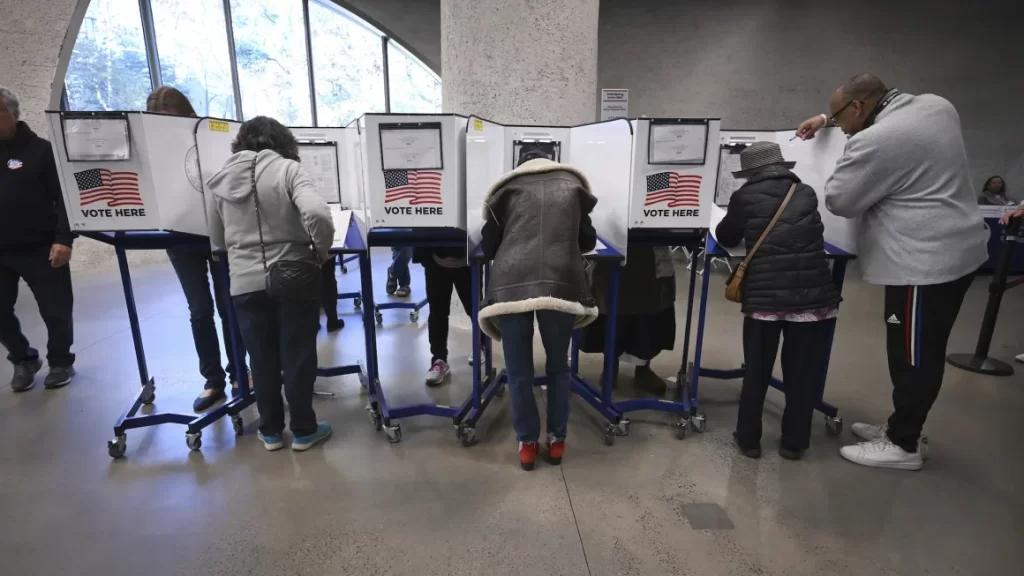As Election Day approaches, early voting data reveals significant changes in the electorate compared to four years ago. With only a week left until the polls open, over 43 million ballots have already been cast across 47 states and the District of Columbia, according to insights from CNN, Edison Research, and Catalist, a data analytics firm that focuses on Democratic and advocacy group interests.
This year’s pre-election voting has seen a marked decline from the record-high turnout witnessed during the 2020 presidential election, primarily driven by the Covid-19 pandemic. The early votes accounted for about 25% of the total votes cast in 2020, which reached approximately 158 million. Current trends show that early voters this year tend to be older, predominantly White, and more likely to identify as Republican compared to their counterparts in 2020. These patterns hold true in many of the key battleground states expected to influence the outcome of the election.
While early voting statistics cannot definitively predict election results, they offer valuable insights into the demographics of those participating in the electoral process so far. In the 39 states where Catalist has comparable data, voters aged 65 and older represent 46% of all early ballots cast, reflecting a 10-point increase from 2020. Conversely, the share of voters aged 30-39 has dropped from 12% to 9%. Additionally, White voters constitute approximately 74% of the early voting electorate, a slight uptick from 73% in 2020, while participation from Black, Latino, and Asian voters has decreased.
Notable State Trends: Georgia and North Carolina
Georgia presents an interesting case amidst the overall decline in pre-election turnout. In the 2020 election, Joe Biden secured the state by a narrow margin, and early voting numbers this year have remained consistent, down only 1% compared to the same time in 2020. Notably, while mail-in voting has decreased sharply, in-person early voting has surpassed last year’s levels. Around 1.3 million Georgians voted by mail in 2020; however, this year, only about 341,000 mail ballots have been requested, with just 187,000 returned so far. In contrast, in-person early voting has exceeded 2.8 million, already surpassing the total from the previous election.
In North Carolina, early voting has declined by 12% compared to four years ago, although in-person voting has increased by roughly 261,000 ballots. As of October 28, only about 20% of mail ballots cast this year compared to the same point in 2020, reflecting a shift in voter behavior away from mail-in voting that was prevalent during the pandemic.
Changes in mail-in voting procedures in both states have made it more challenging to cast ballots by mail since 2020. In Georgia, stricter identification requirements and reduced access to drop boxes have made mail-in voting less accessible. Similarly, North Carolina now requires two witness signatures for mail ballots, a shift from the previous requirement of one.
Political Party Dynamics
The voting landscape has also evolved along party lines. Historically, many Republicans preferred to vote in person on Election Day, while Democrats leaned towards early voting. A recent CNN poll indicates that Vice President Kamala Harris holds a substantial lead among early voters, despite the overall race being tightly contested.
Interestingly, the Trump campaign has shifted its messaging this year, actively encouraging early and mail-in voting among Republicans. Currently, Republicans account for 35% of early votes in states where Catalist has data, up from 28% in 2020. In contrast, Democratic participation has fallen from 45% to 39%.
In battleground states such as Arizona and Nevada, similar trends are evident, with Republicans increasing their share of early votes, while Democrats see a decline. For instance, in Arizona, Republicans now represent 43% of early voters, a significant rise from 33% in 2020, while Democratic participation has dropped to 35%.
Demographic Insights
In key battlegrounds like Michigan and Wisconsin, voter demographics reveal consistent patterns. In Michigan, for example, White voters have cast 84% of the early votes so far, while Black voters account for 11%. Gender dynamics remain stable, with women comprising 57% of the early electorate. Conversely, in Georgia, the percentage of ballots cast by White voters has increased to 64%, whereas the share of Black voters has decreased to 29%.
Overall, as Election Day nears, the pre-election voting landscape reflects shifting demographics, party affiliations, and voting preferences that could shape the election’s outcome. The evolving trends will be closely monitored as the final ballots are cast.






